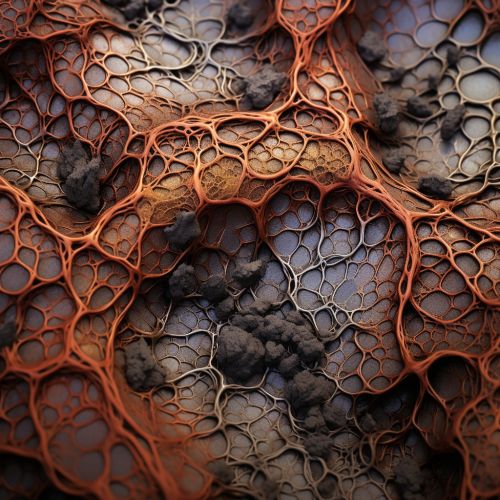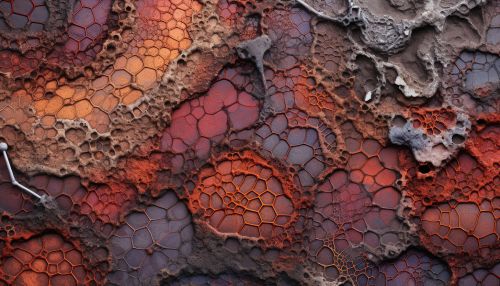Biological Soil Crust
Introduction
Biological soil crust, also known as biocrust, is a complex community of organisms that reside on the soil surface in many ecosystems worldwide. This community is composed of cyanobacteria, algae, lichens, bryophytes, and fungi, among other organisms. These organisms interact with each other and the environment, forming a crust on the soil surface that plays a crucial role in the ecosystem's functioning.


Formation and Composition
Biological soil crusts form in areas where the growth of higher plants is limited, such as arid and semi-arid regions, alpine regions, and early successional stages. The formation of biocrusts begins with the colonization of bare soil by cyanobacteria and algae, which produce sticky substances known as exopolysaccharides. These substances help to bind soil particles together, forming a stable surface for the colonization of other organisms, such as lichens and bryophytes.
The composition of biocrusts can vary greatly depending on the environmental conditions. In arid and semi-arid regions, cyanobacteria and algae are often the dominant organisms, while in more humid regions, lichens and bryophytes may be more prevalent. The diversity of organisms within biocrusts can also be influenced by factors such as soil type, climate, and disturbance history.
Ecological Roles
Biological soil crusts play a number of important ecological roles. They contribute to soil stability by binding soil particles together, reducing erosion and increasing the soil's resistance to wind and water forces. They also play a crucial role in nutrient cycling, as they are capable of fixing atmospheric nitrogen and carbon, making these nutrients available to other organisms in the ecosystem.
In addition, biocrusts can influence water dynamics in the ecosystem. They can increase water infiltration into the soil by creating a porous surface, and they can also reduce evaporation by providing a physical barrier between the soil and the atmosphere. Furthermore, they can influence the germination and growth of higher plants by altering the microclimate and nutrient availability in the soil.
Threats and Conservation
Despite their ecological importance, biological soil crusts are threatened by a variety of human activities, including land development, agriculture, and recreational activities. These activities can disturb the soil surface, damaging or destroying the biocrusts and disrupting their ecological functions.
Conservation of biological soil crusts requires a combination of strategies, including protection of existing biocrusts, restoration of disturbed areas, and education about the importance of biocrusts. Research is also needed to improve our understanding of biocrust ecology and to develop effective conservation strategies.
